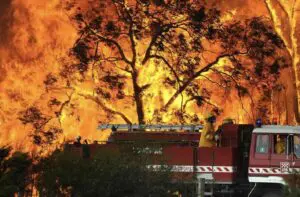Electric vehicles could account for a massive 90 per cent of all cars and commercial light vehicles on Australia’s roads by 2050, a new federal government-backed report has predicted.
The report – commissioned by the Clean Energy Finance Corporation and ARENA, and based on modelling by independent research group Energeia – forecasts a surge in EV sales in Australia starting as early as 2021.
This would see the number of EVs sold annually make up 50 per cent of all new car sales by as early as 2030, and then 100 per cent by 2040, according to the mid-range scenario modelled by Energeia.
The bullish new forecast follows hot on the heels of the latest Bloomberg New Energy Finance outlook, which has forecast that 92 per cent of the nation’s electricity will come from renewable sources by 2050, as falling battery storage costs boost solar and wind uptake.
BNEF this week also forecast steep growth in EV uptake – although not quite as steep as the Energeia report – as part of a massive transition that is reshaping some of the world’s biggest industry sectors, and decarbonising economies, over the course of just decades.
“Right across the clean energy economy, we are seeing dramatic falls in prices as the use of new technologies becomes more widespread and as the private sector responds to new investment opportunities,” the CEFC’s Learmonth said on Thursday.
“We can expect to see the same trends in the EV market, with increased sales driving down vehicle purchase costs and private investors financing new charging infrastructure to service this new market opportunity.”
Interestingly, the BNEF forecast for EVs for Australia was less bullish, even, than Energeia’s no intervention scenario, predicting that EVs would make up just 76 per cent of all new car sales in Australia by 2050, and 75 per cent of the total car fleet.
The CEFC/ARENA report, however, stresses that achieving the forecast “moderate” trajectory in Australian EV growth would need the right combination of policy incentives, models and infrastructure, as well as around $1.7 billion in private investment.
Particularly considering the embarrassingly low base it would be coming from.
“Australians have traditionally been early adopters of new technology, but we’re lagging when it comes to EVs,” said CEFC chief Ian Learmonth in comments accompanying the report on Thursday.
“This research shows that we can increase the uptake of EVs in a way that benefits drivers as well as the environment. It’s about lowering prices, supporting more models and creating a charging network.”
Needless to say, the stunning numbers predicted in Energeia’s mid-range “Moderate Intervention” scenario radically eclipse any forecasts previously ventured by the Turnbull government, of around 15 per cent of new vehicle sales by 2030.
As you can see in the chart above, even the “no intervention” scenario modelled by Energeia – no incentives or policy support, etc, but driven “purely by economics” – sees more than 20 per cent of new car sales being electric vehicles by 2030.
With moderate intervention, however – which, as defined by the report, is boosted by a mix of local state and federal government policy support, tax cuts, vehicle emissions standards (but no long-term decarbonisation target) – EVs make up half of new car purchases by 2030.
“Under the Energeia Moderate Intervention scenario, PEV sales (both Battery Electric Vehicles and Plug-in Hybrid Electric Vehicles) are forecast to reach 615,000 vehicles per annum by 2030, increasing to 1.89 million annual new vehicle sales by 2040, or 49 per cent and 100 per cent of sales respectively,” the report says.
“There is a relatively steady increase in PEV sales to around 28 per cent per annum by 2026 driven by falling PEV prices supported by falling battery prices, increased model availability by OEMs, and an increasing differential between electricity and petrol prices.”
The Accelerated Intervention Scenario – which assumes the same sort of policy incentives as in the moderate scenario, only applied sooner; and with the added impetus of an ICE car ban introduced at a later stage – sees EV sales making up 20 per cent of sales in 2022, 50 per cent by 2027, and 100 per cent by around 2038.
“The reality is that the transition to EVs is inevitable,” says Learmonth. “We’re already seeing vehicle makers confirm they will stop producing pure internal combustion engines over the coming years.
“At the same time, we’re seeing dramatic improvements in vehicle charging networks, creating the essential infrastructure to support electric vehicles.
“These measures can deliver a material improvement on our greenhouse gas emissions, as well as take our vehicle fleet into the 21st century.”








